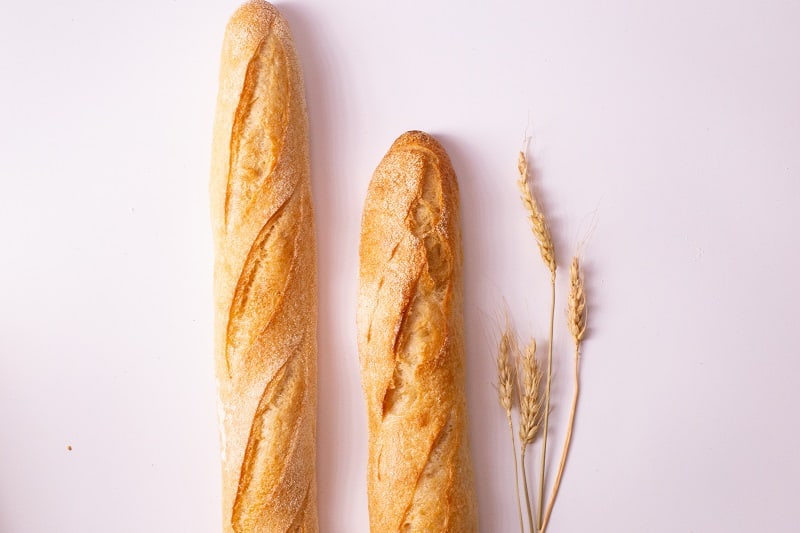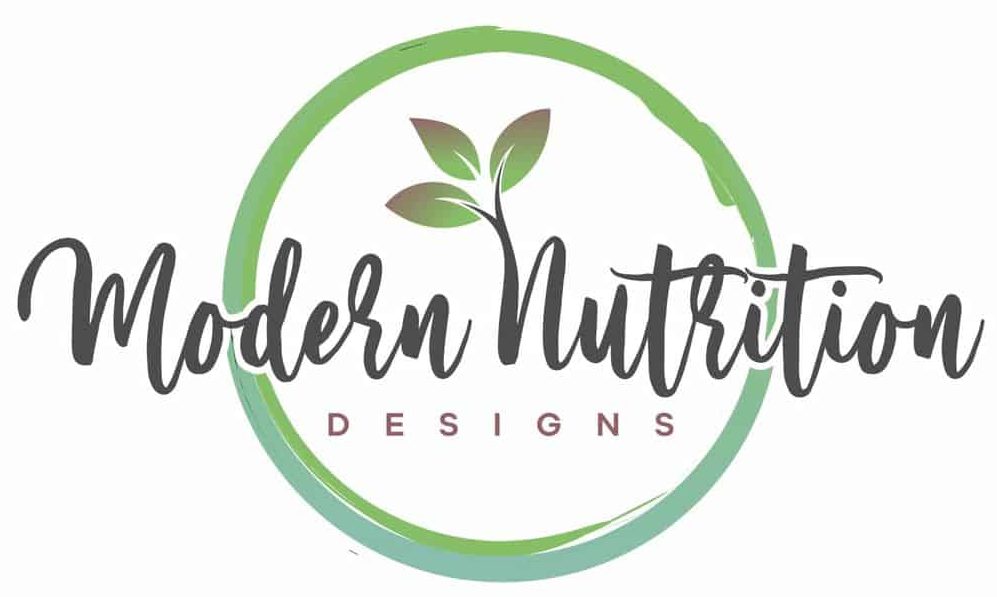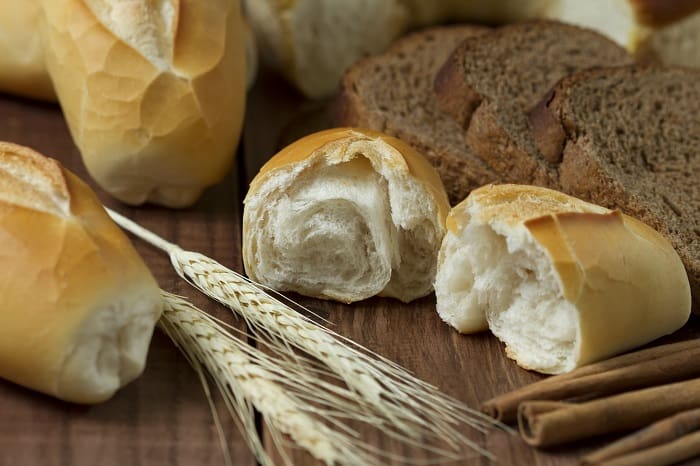Over the 5 years, I have been eating plant-based I commonly receive the question of whether or not I eat bread. As simple as this may seem, there are actually many ways to answer it correctly.
You can eat bread on a plant-based diet if you are not concerned with eating processed, artificially caloric-dense foods. If you are consuming a whole-foods plant-based diet for health and longevity, however, then you would want to refrain from eating bread of any kind.
I realize this is likely not the simple answer you were searching for, but there is quite a bit of ambiguity linked to the original question. Let me explain why I personally refrain from eating bread on this diet plan.
What is a whole-foods plant-based (WFPB) diet?
I like to think of a WFPB diet as being on a spectrum. On one side of the spectrum, you eat only whole foods in their most natural form, such as apples, zucchini, and potatoes. Then, as you reach towards the opposite end of the spectrum you begin trading whole foods for more processed foods. These include anything from milk and sausage to chips and tofu.
“Plant-based” technically can be defined as a dietary pattern that consists mostly of plant-foods. “Mostly” plant foods would equate to more than half of your foods coming from plants, whether processed or not.
Even though any increase in whole plant foods is going to increase your health and longevity, going full-blown WFPB ensures the longest potential lifespan with the greatest potential in quality of life as well. So you are not just living a longer life, you are also living more years disease-free.
As someone who has dabbled all across the plant-based spectrum, I can easily attest to the fact that the more relaxed I become with my dietary choices the more symptoms I experience. For instance, when I start incorporating more processed items such as bread into my diet I begin to notice more fatigue, headaches, skin problems, and gastrointestinal issues like pain, discomfort and bloating.
Wherever you fall on this spectrum is completely up to you.
Why bread is considered low-quality plant-based food
Bread is usually made out of yeast, oil, water, and flour. Three out of four of those items are highly processed and greatly lacking in nutrients.
When a food, such as an olive becomes processed into oil, the water, fiber, minerals, vitamins, antioxidants, carbohydrates, protein, and thousands of phytochemicals are extracted from the original food. This leaves you with solid fat that contains 120 calories per tablespoon.
Our bodies are not designed for this pure liquid fat food-like substance. The oil is not processed as an olive would be had we consumed the item in its natural form.
It is not wise to consume oils, as this will quickly lead to weight gain. You are also missing out on much more nutritious calories when consuming any amount of a processed food.
Now, let’s take a look at the flour used to make bread. What was once a whole stalk of wheat grass has been pulverized into wheat flour. Again, this process removes the majority of the plant’s healthful components and leaves you with pure refined carbohydrate.
When this substance enters your bloodstream there is a large surge of insulin that closely follows. This is due to the high liberated glucose content in refined carbohydrates. When the carbohydrate is no longer connected to its original water and fiber content, it rapidly gets utilized by the body.
If you repeatedly expose your system to a lot of highly refined carbohydrates, such as those in bread, you will eventually develop insulin resistance.
Anytime you alter a food from its original form you are inevitably causing harm to your cells, tissues, and organ systems.
Another thing to keep in mind is that the more you process a food, the more concentrated it becomes in those items that have not been removed or replaced. Thus, the more you process a food the more calorically-dense it becomes.
My point is, if you are consuming a plant-based diet with the objective to lose weight, you may want to refrain from eating bread altogether. Or perhaps only consume small amounts on special occasions.

What kinds of bread are the healthiest
The goal on a plant-based diet is to use each meal as an opportunity to take in the most nutrient-dense foods that are also low in calories. In that respect, you would want to eat something like whole rice, or whole oat groats, or whole potatoes instead of bread.
That being said, the occasional piece of toast in the morning is not going to make or break your system. Although there are healthier options, such as whole groat oatmeal with flax seeds and fresh berries, it is perfectly okay to consume these less than optimal food choices on a semi-regular basis.
The healthiest breads are the following:
- Sprouted whole grain
- Sourdough
- 100% whole wheat
- Oat bread
- Flax bread
- 100% sprouted rye bread
- Healthy gluten-free bread
Sprouted grains
Sprouted grains are simply whole-grain seeds that have just begun to sprout. In order to catch the sprouts at just the right moment in the growing process, whole-grain seeds are typically soaked and then nurtured in environments with controlled amounts of warmth and moisture. – Harvard Health Publishing
These grains are healthier than other grain-derived bread because they are ultimately less processed. Sprouted grains do not increase blood sugar as much as other grains. They also retain more of their vitamins, minerals, fiber, and protein content.
Sourdough
Sourdough is considered healthier than most doughs because it is fermented by bacteria instead of yeast. In recent studies, sourdough fermentation was much more efficient than yeast fermentation in reducing the phytate content in whole wheat bread. Phytates are thought to bring about indigestion when consumed in fermented foods such as bread.
Sourdough has been shown to be an effective pre-biotic. Which makes it helpful for creating a healthy microbiome.
This bread is also absorbed more slowly in the bloodstream allowing for a lower insulin release. Sourdough and sprouted breads are then more easily digested by those with diabetes.
100% Whole grain wheat
To be a “whole grain” the item must preserve all three parts of the original grain; the germ, the bran, and the endosperm.
Grains can be rolled, crushed, or cracked. Nonetheless, as long as these three parts are present in their original proportion, they’re considered whole grains. Refined grains have had the germ and bran removed, leaving only the endosperm.
Whole grains are rich in protein, fiber, B vitamins and many other nutrients that help to lower blood pressure, reduce gum disease, strengthen the immune system and control weight. – Cleveland clinic
Oat bread
Oat breads are rarely made from 100% oat grains. They are typically mixed with wheat flour, yeast, salt, and water to make bread. Overall, this type of bread is considered healthier because it does include oats.
Oats are high in fiber and beneficial nutrients, including magnesium, vitamin B1 (thiamine), iron, and zinc. The fiber in oats, known as beta-glucan, may help lower cholesterol levels, regulate blood sugar, and decrease high blood pressure.
Flax bread
Similar to oat bread, flax bread is considered to be one of the healthier bread choices because it contains flax.
Flax seeds have a great nutrient composition. They are loaded with fiber and alpha-linoleic acid. This particular acid ultimately converts from small-chain fatty acids into longer-chain fatty acids in the gut creating DHA.
DHA is necessary for brain health. This is particularly important for vegans and vegetarians who do not consume fish.
100% sprouted rye bread
Rye is one of the major glutinous grains. For people without an existing gluten intolerance or sensitivity, however, they can obtain several health benefits from consuming this grain.
When compared to wheat, rye is often considered more nutritious. In fact, studies show that rye bread may lead to greater fullness and have less of an impact on blood sugar than wheat bread.
Healthy gluten-free bread
Gluten is the protein found in wheat, rye, and barley. Most bread is made from wheat and rye grains. Gluten-free bread is typically made from rice, potato, or corn derivatives.
Many people wrongly assume that gluten-free breads are healthier than those that contain gluten. However, most gluten-free varieties are made from refined flours and tend to be high in added sugars, as well as other unnecessary additives.
There are healthy gluten-free breads. You just have to search a little harder for them. These tend to be very fresh, expensive, and don’t stay good for very long. The best gluten-free breads are usually made from sourdough, millet, buckwheat, and quinoa.
People with gluten intolerance or gluten sensitivity should refrain from eating bread with gluten of any kind. You can usually find gluten-free bread at your local grocery store.
Or you may choose not to eat bread at all. I may only consume bread once or twice a year on special occasions. I prefer to stick with healthier intact grains like rice, quinoa, and teff. You can always use lettuce wraps or corn tortillas as a healthy alternative to bread as well. Just keep in mind that tortillas are also processed but usually less so than bread.
Gluten-free varieties of all foods have become very popular in the past decade due to the false consumption that eating gluten-free is better for everyone. When in fact, the only people that truly need to refrain from consuming these types of grains are those who either have an existing condition with gluten sensitivities, or those who have family members with an existing condition.
Karli Jackson

